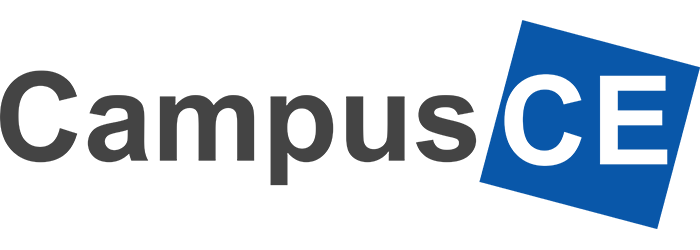Seattle, WA – The first months of 2012 have presented a different paradigm for those of us that support the higher education community with technology solutions to improve institutional workflows. The community of institutions using CampusCE’s open enrollment education management software has grown immensely, and our firm expects to continue making forward strides in improving its level of service for continuing & community education, workforce and professional development, corporate training and lifelong learning organizations.
As a whole, the open enrollment technology market has benefited from a heightened interest from educators and administrators looking to improve the level of their learning community’s web 2.0 student services, and in part from a failure of enterprise providers to implement their systems to meet the needs of students and administrators. Higher education often has multiple missions: research, undergraduate and graduate ascription, and short-term enrichment and training. The challenge in managing the fulfillment of each of these missions successfully is that the key performance indicators for the primary, secondary and tertiary operations are so vastly different, and the implementation of a process that supports multiple mission critical workflows in one monolithic system (as is the norm for higher education) is either untenable or well outside the comfort zone of institutional IT personnel. As a result, the secondary or tertiary missions of higher education institutions fall victim to prevailing processes that are easily supported by the existing implementation of the enterprise’s workflows.
Depending on each institution’s unique identity and state charter the secondary missions could be to deliver high quality matriculated programming, or to provide short-term workforce training or corporate and community outreach programs. In short, higher ed. produces three or more very different and complex products for society to consume. By way of analogy if higher education was Henry Ford he would be trying to make automobiles, electric razors and microwaves on a single assembly line.
In large part, an accelerated economic recovery depends on our ability to quickly train and certify our workers with the skills that are required to participate in the new economy – and this requires a renewed focus from public education in the open enrollment arena as matriculated programming is much too slow to adapt to the changing needs of the labor force. Many Americans, and especially younger generations were excited to see higher education reform outlined as part of the national agenda early this year and it is paramount that the American people, begin to understand the structural problems that are preventing the country from getting back to work. The country’s high unemployment rate isn’t a result of failed economic policy and that there aren’t enough on shore jobs, but that our country has a knowledge gap between the skills required to fill the available, high wage positions and the parallel skills of American job seekers.
2012 is the first year in a period which will see open enrollment programs that serve secondary missions in public higher education adjust to the digital age or find themselves forced from the businesses they are currently in. 2012 is the first year in which there is enough fiscal pressure to force administrators into making decisions. Administrators will have to decide (here it makes sense to revert to Mr. Ford) whether to structurally reinvest in their dying products by buying a new assembly line that is good for making razors and microwaves or find that they can no longer make personal hygiene and small home appliances effectively.
The up or out environment CampusCE is envisioning will see more certificate-based, workforce and corporate training programming, less personal enrichment and community education, and enhanced regional competition between programs. Each State in the Union will be drawn into the reinvestment process at its own pace, depending on its unique fiscal circumstance; but, a moment of decision is inevitable in every case. As administrators looks to stretch every dollar in what will continue to be an uncertain and fiscally austere climate, institutions will need to decide whether to make the necessary investments in technology and personnel in order to refocus their efforts on executing secondary and tertiary missions or drop those missions from their charter all together.
For administrators, the necessity and urgency of making some kind of decision about whether to reinvest in short-term programming or to move out of the market will increase as the year goes on. As the demand for open enrollment, certificate and short term training programs increases over more expensive and exhaustive matriculated programs, addressing the issue of open enrollment student services workflow will become paramount in the onset of 2013, and poorly equipped programs will continue to lose out on the market opportunity and bleed money from their parent institutions. The longer the decision making process gets delayed the bigger the problem becomes – 2012 has thus far proven to be a year of action for many institutions.
At CampusCE, we hope this trend continues.
